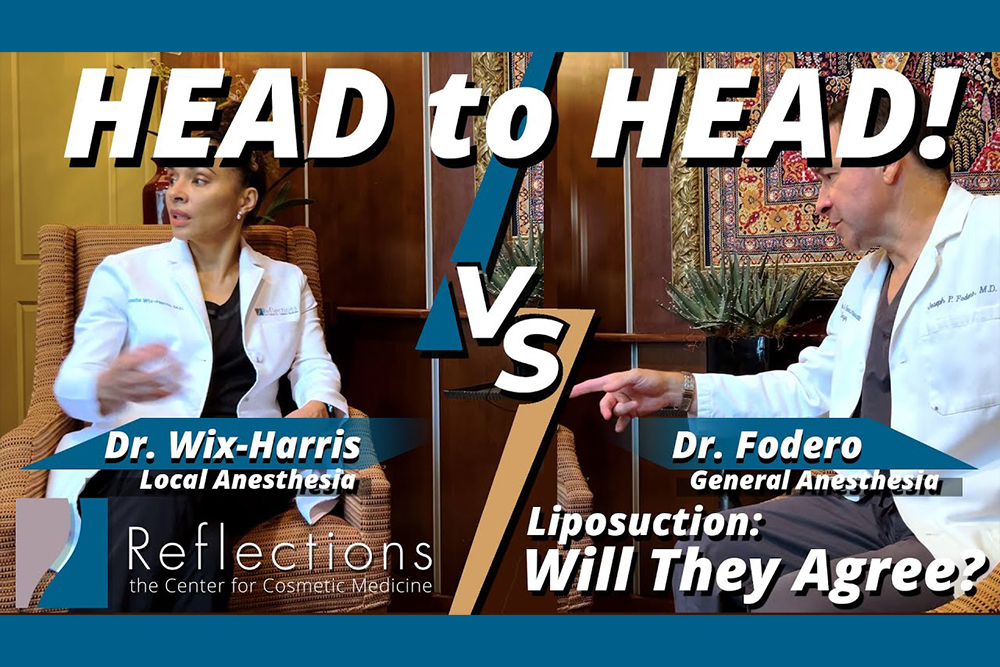Gynecomastia is a medical condition that causes men to develop excess breast tissue. This condition does not only affect men physically, however. The growth of male breasts can majorly impact the self-confidence of these men and teenage boys who develop gynecomastia, so it is important to effectively treat your symptoms by finding the root cause.
Top Asked Questions About Gynecomastia
- Does gynecomastia go away?
Gynecomastia often goes away after puberty but if you are still living with gynecomastia as an adult, you may need surgery or another form of treatment to remove excess breast tissue.
- How do I get rid of gynecomastia?
Surgery is usually the most effective treatment to permanently get rid of gynecomastia, but you may be able to try estrogen-boosting medications or liposuction.
- What can make gynecomastia worse?
Alcohol, drug, and steroid use can increase your chances of developing gynecomastia. Plant oils, such as tea tree or lavender, have also been linked to gynecomastia, so you may want to avoid soaps and lotions with these ingredients.
- Does weightlifting get rid of gynecomastia?
It is important to note that gynecomastia is a medical condition, not the result of weight gain. Therefore, weightlifting will not get rid of gynecomastia.
What Causes Gynecomastia, or Enlarged Male Chest?

Hormonal Imbalance
Hormone changes during puberty are one of the most common causes of gynecomastia. Hormone changes can also happen if you take steroids while working out or if you are prescribed steroids to treat hormone deficiency, delayed puberty, or muscle loss from another medical condition. Other medications that have been linked to gynecomastia include AIDS medications, ADHD medications that contain amphetamines, anti-anxiety prescriptions such as Valium, tricyclic antidepressants, antibiotics, heart medications, and chemotherapy.

Genetic Predisposition
If you are born with a predisposition to store more fat in your chest, this can lead to gynecomastia since fat stretches the skin. A family history of gynecomastia is also an indication that you are more likely to develop this medical condition.

Gender Transformation
The gender transformation from female to male can also be a cause of gynecomastia. Transgender males still have breast tissue, which is then classified as gynecomastia. The remaining breast tissue leads to heightened feelings of gender dysphoria because of the feminine-appearing chest.
Our Favorite Treatments For Gynecomastia
Breast tissue is partially made of fat and by removing this fatty tissue, the size of the male breasts can be significantly reduced. Liposuction is the most effective way to permanently remove this fatty tissue.
Liposuction
Liposuction will remove excess fat by using a cannula, or small hollow tube, to carefully suck out fat from the target areas. When used to treat gynecomastia, this removal of fatty tissue will sculpt and flatten the chest. This is a minimally invasive surgical procedure that will take about 4-6 weeks to fully recover from.
Laser Liposuction & VASER Liposuction
Laser and VASER liposuction are procedures similar to traditional liposuction except these methods use heat energy or ultrasonic waves to break apart and dissolve fat. Laser liposuction “melts” your fat away and makes it easier to suck out, which can also make your recovery easier since there is less bruising. Because of the use of heat, laser liposuction can simultaneously tighten the skin for a toned look. VASER liposuction is also a gentler procedure than traditional liposuction and has some skin tightening benefits.
As fat builds up under the skin, the skin can start to sag. This adds to the appearance of a larger, less toned chest.
Skin Excision Around Areola
Skin excision around the areola is a common treatment for gynecomastia. By making a small incision around the areola, the nipple can be lifted, and excess skin will be removed from around it. With less hanging skin, the remaining skin can be pulled back tightly over the chest for a flatter appearance.
Anchor-shaped Skin Excision
An anchor-shaped incision may be the more effective option to remove a larger amount of excess skin. An incision will be made under the breast and around the areola, then a vertical incision will connect the two to make an anchor or upside-down “T” shape. This incision is a bit more complex than a single incision around the areola but is more effective for moderate to severe gynecomastia.
Removing Excess Glands
Removing the glands within the breast effectively removes nearly all of the breast tissue to flatten the chest for a more masculine appearance. This is a surgical procedure with permanent results.
As part of their gender transformation process, transgender men may choose to have top surgery to remove their feminine breasts and visually affirm their gender. Top surgery not only removes breast tissue but also contours the chest for a masculine appearance. Nipple and areola resizing can also be done to treat puffy nipples, a common symptom of gynecomastia.
Gynecomastia
Gynecomastia surgery combines liposuction with the removal of both the breast tissue and breast glands to permanently stop the development of breast tissue. A more contoured, masculine chest can be achieved with this surgery.


Why Choose Reflections For Gynecomastia Surgery
At Reflections Center, we have a combined team of plastic and cosmetic surgeons to provide you with the best treatments that are both aesthetically pleasing and treat your medical concerns. You will be working with a highly specialized physician and the latest medical technology to ensure the best results.
Although you may feel embarrassed about your gynecomastia, we work with compassion and deliver personalized care to help you feel comfortable the moment you step through our doors. We understand that every body is unique and will design a treatment plan specific to your unique anatomy and concerns. We want you to feel confident about yourself and look forward to helping you achieve that confidence by treating your gynecomastia.
Schedule a Consultation
For more information regarding gynecomastia treatment, contact Reflections Center today. Your first step is to schedule a free consultation appointment with one of our skilled physicians.
During your appointment we will speak with you regarding your medical history and aesthetic concerns to create a unique treatment plan for you.
Frequently Asked Questions About Gynecomastia
- What is the most common cause of gynecomastia?
Gynecomastia is most often caused by hormonal changes and an imbalance of testosterone and estrogen.
- Does stress cause gynecomastia?
Stress may be an underlying cause of gynecomastia. Stress causes an increase in cortisol which then causes a decrease in testosterone. This decrease in testosterone may be a cause of gynecomastia.
- At what age does gynecomastia go away?
If gynecomastia goes away by itself, it should do so by the age of 21.
- Does gynecomastia mean less testosterone?
Low testosterone is one of the main causes of gynecomastia but once you develop gynecomastia, this will not cause an increased loss of testosterone.
- What are the stages of gynecomastia?
Gynecomastia is usually diagnosed in four grades or stages. Grade 1 is usually not noticeable since there is only a small level of breast enlargement focused around the areola or nipple. Grade 2 is categorized by a mild to moderate amount of breast tissue that has expanded to the width of the chest, creating the appearance of small breasts. People with grade 3 gynecomastia will have difficulty hiding their moderate to severe amount of breast tissue and resulting excess skin. Grade 4 gynecomastia is highly visible since a large amount of breast tissue has now developed and there is a moderate level of excess skin.
- What happens if gynecomastia is not treated?
If gynecomastia is left untreated, there is little risk of negative consequences unless you are bothered by your enlarged breasts. Some men with gynecomastia feel extremely self-conscious which causes anxiety and stress.

Blog
15 Most Popular Treatments for Men
For many years men sat idle, wishing they could do things to improve their...
Read More
Blog
What is Liposuction?
Liposuction is a procedure that sculpts the body by removing unwanted fat from...
Read More
Blog
Men Get Cosmetic Surgery, Too
Our society places a high value on looking young and fit. Today, men of all...
Read More






